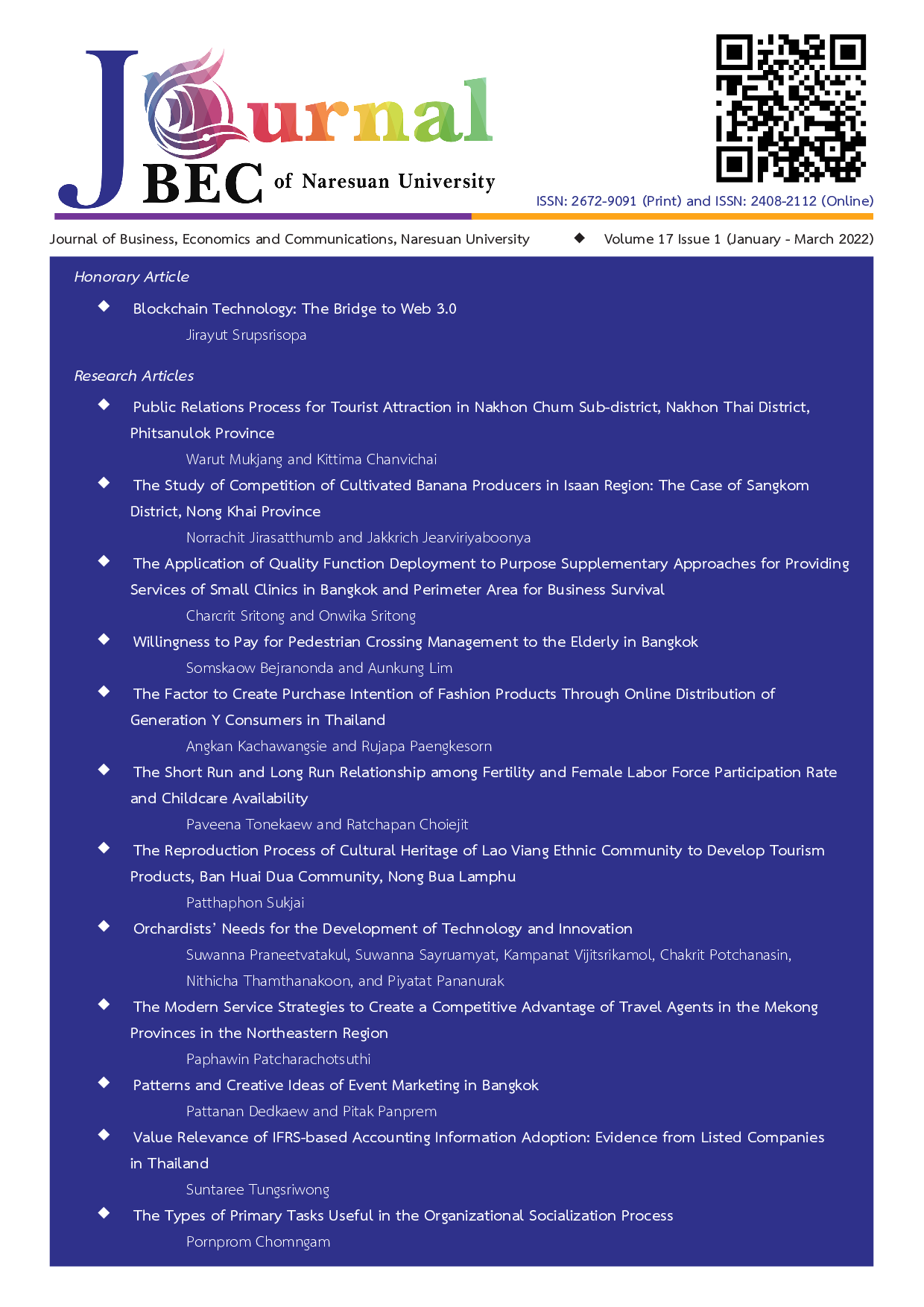The Factor to Create Purchase Intention of Fashion Products Through Online Distribution of Generation Y Consumers in Thailand
Main Article Content
บทคัดย่อ
This study is mixed method between qualitative research and quantitative research. The result that the performance expectation factor, the expectation of the effort factor, trust factor, habit factor, condition of facilities factor, social influence factor, price value aspect factor are factors affecting to attitude satisfaction and confidence of distribution through online distribution channels of Generation Y in Thailand, and found that attitudes, satisfaction and confidence are factor affecting purchase intentions through the online distribution channels of Generation Y consumers in Thailand. The results of the study were consistent and conflicting with the results of the qualitative research, which entrepreneurs distributing fashion products through online distribution channels, they can be used to formulate strategies that will satisfy Generation Y consumers and gain confidence in purchasing products through online distribution channels, including the intention to purchase products efficiently.
Article Details

อนุญาตภายใต้เงื่อนไข Creative Commons Attribution-NonCommercial-NoDerivatives 4.0 International License.
เอกสารอ้างอิง
Ahmada, S. N. B., Shaarib, A., Hussinc, H., Tajudind, M. M. & Hansarame, S. K. (2019). Influence of Perceived Risk on Consumer Attitude and Repurchase Intention among Gen Y Online Shoppers in Malaysian. International Journal of Innovation, Creativity and Change,
(4), 42-54.
Asisonthisakul, R. & Rungrang, A. (2019). Generation Y ... why is it interesting?. Retrieved from http://www.bizexcenter.com/journal business/generation y-marketing another generation.html.
Jaipukdee, P & Tuntiwatchakun, N. (2019). Generation Y's environmental care and consumer behavior towards environmental brands. Journal of Humanities and Social Science, Burapha University, 27(55), 83-109.
Mokwele, T. E. (2018). Factors influencing the consumption of digital music for women in South Africa. Retrieved from http://wiredspace.wits.ac.za/bitstream/handle/10539/26255/MMSM_ResearchReport_ThaboMokwele2017_Final.pdf?sequence=1&isAllowed=y.
Mudaa, M., Mohdb, R. & Hassan, S. (2016). Online Purchase Behavior of Generation Y in Malaysia. Procedia Economics and Finance, 37, 292 – 298.
Quintal, V., Phaun, I., Sims, D. & Cheah, I. (2016). Factors influencing Generation Y ’s purchase intentions of prototypical versus me-too brands. Journal of Retailing and Consumer Services, 30, 175-183.
Swiegers, L. (2018). Perceived risk barriers to online shopping: experiences of technologically enabled Generation Y consumers. Retrieved from https://scholar.sun.ac.za/handle/10019.1/103625.
Thanarataungthavee, T. & Cunthawong, P. (2016). Factors that positively influence consumers' intention to buy
clothes in stores on Instagram. Retrieved from https://kukr.lib.ku.ac.th/proceedings/index.php?/KUCON2/search_detail/result/333433.
The National Statistical Office. (2019). Number of people by age across the country, December 2019. Retrieved from http://stat.dopa.go.th/stat/statnew/upstat_age_disp.php.
Trivedi, S. & Yadav, M. (2018). Predicting online repurchase intentions with e-satisfaction as mediator: a study on Gen Y". VINE. Journal of Information and Knowledge Management Systems, 48(3), 427-447.
Van Den Bergh, J. & Behrer, M. (2011). How cool brands stay hot: branding to Generation Y. London: Kagan Page.
Venkatesh, V., Morris, M. G., Davis, G. B. & Davis, F. D. (2003). User acceptance of information technology: Toward a unified view. MIS Quarterly, 27(3), 425-478.
Withawatoran, S. (2007). Hold tight to work. Bangkok: Bangkok business bit book.


